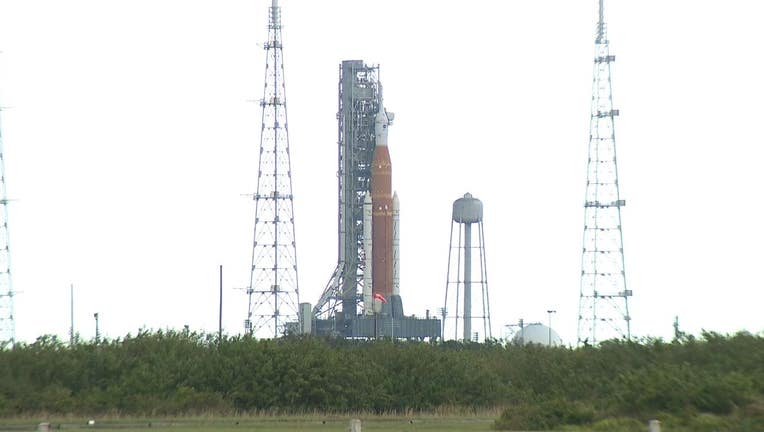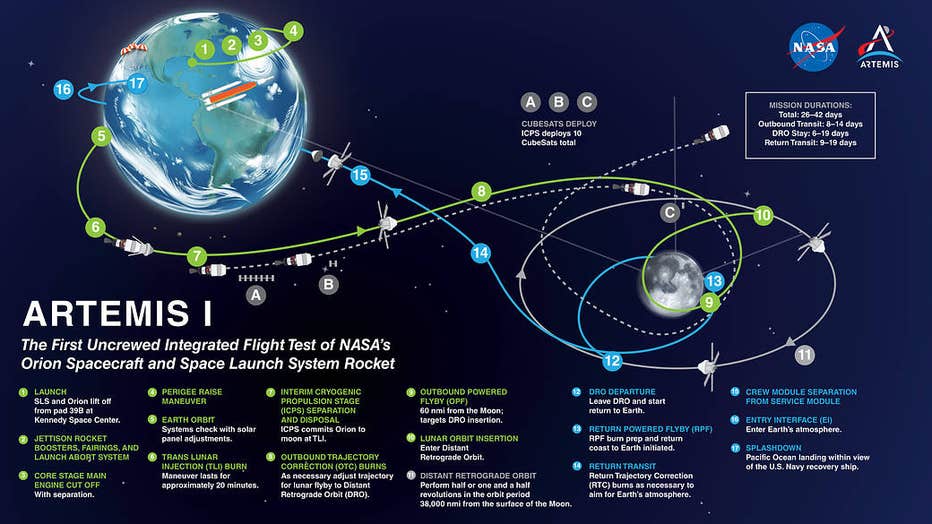NASA: Artemis I rocket launch still on, despite minor damage during Hurricane Nicole

While the Artemis I rocket suffered some minor damage while on the launch pad during Hurricane Nicole, NASA said Friday some of that damage had already been repaired – or will be repaired – and should not impact next week's planned launch at Florida's Kennedy Space Center.
"There's nothing preventing us from getting to the 16th. We do have some work to do," said Jim Free, NASA's Associate Administrator for Exploration Systems Development, in a teleconference with reporters on Thursday afternoon.
He said there was a loose RTV (room temperature vulcanizing material) on Orion, which will be removed, an engine rain cover on one of the engine's tore, which will also be repaired, and some water reportedly got into a crew access arm. On the ground, he said one of the arms on the hydrogen mast unit was distributing some "erratic signals," and that crews were investigating that.
Currently, Artemis is scheduled to launch early Wednesday morning, Nov. 16, at KSC. The two-hour launch window opens at 1:04 a.m. (yup, it's early). Countdown will begin at 1:24 a.m.
HOW TO WATCH ARTEMIS I ROCKET LAUNCH
Stream online: www.FOX35Orlando.com/live or www.fox13news.com/live
Stream in app: Download FOX 35 News app | Download FOX 13 News app
The uncrewed mission is essentially NASA's return to the moon since the historic Apollo program – and the first in a series of tests, before eventually bringing human astronauts aboard. The three-week mission will take the rocket into deep space, thousands of miles beyond the moon, before returning to Earth.
If it indeed launches on Wednesday morning, splashdown back on Earth is scheduled for Dec. 11. A backup date is reserved for 1:45 a.m. on Saturday, Nov. 19.

Artemis 1 mission timeline from launch to landing. (Photo via NASA)
During the call, however, Free acknowledged that if NASA could have rolled the entire rocket back to the Vehicle Assembly Building (VAB) before Hurricane Nicole arrived – an hours-long process – they would have, but they did not have enough time to do that.
He said several tests were conducted throughout Hurricane Nicole, including tracking wind speeds, and said none exceeded their limits or certifications.

